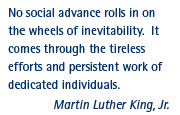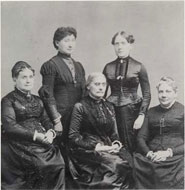By Alan Durning
In Cascadia and beyond, the movement for sustainability—for a healthy, lasting prosperity grounded in place—is advancing in a slow-motion revolution. From the Pacific Northwest’s faith communities to its labor unions, from its government leaders to its business executives, we northwesterners are increasingly acting on the values at the heart of sustainability—strong communities, fair markets, and responsible stewardship.
Consider a few current trends: Increased energy efficiency and windpower are now the region’s fastest-growing sources of electricity. Building complete, compact communities is entering the mainstream in the region’s real-estate industry. Sales of more-sustainable products—organic foods, certified lumber, hybrid vehicles, super-efficient jetliners, wild salmon—are on steep growth curves. Teen births are at record lows and lifespans at record highs.
Unfortunately, remaining challenges such as climate change are so daunting, and countervailing trends such as private property “takings” initiatives are so menacing, that it’s easy to get discouraged. A look at the history of social change movements offers one antidote to such dejection. Setting the campaign for a sustainable economy beside similarly audacious causes of the past, such as the crusades for emancipation and suffrage, makes clear that our movement is advancing as quickly as can be expected, if not as quickly as we might hope.
Movements for fundamental change always unfold over many years, in fits and starts. Even the most visionary leaders cannot predict their course, only their ultimate success. As Martin Luther King, Jr. said, “The arc of the moral universe is long, but it bends toward justice.”
Twelve men meeting in a London bookshop in 1787, for example, launched the cause of ending slavery in the British Empire—a movement whose chances of success at the time appeared infinitesimal. Slavery was far older than the Empire and more than half of humans then on the planet were held in slavery, serfdom, indentured servitude, or debt peonage(1). Worse, channels to reform were few. Scarcely one in ten Englishmen—and no Englishwomen—even had the right to vote. Yet within half a century, every slave in the empire was emancipated.
Similarly, five women meeting in a parlor in upstate New York in 1848 launched the women’s suffrage movement (2). At the time, nonslave women were legally wards of their fathers or husbands. Forbidden from signing contracts or testifying in court, even married women had legal rights to neither property nor earnings nor even their children. Yet in just three quarters of a century, women could vote not only in the United States but also in Canada and parts of Europe.
Slavery and disenfranchisement both became untenable, and their end—long thought impossible—became inevitable. What explains this extraordinary progression? The same two things that explain the success of history’s other great social change movements: an unarguable moral principle—in these cases, freedom and equality—and a corps of people, initially few, who would not rest until that principle was reflected in society’s norms and laws.
The sustainability movement arguably began with the 1972 UN World Environment Conference in Sweden. There, the agendas of environmental conservation and of human and economic progress met and synthesized into the living principle of sustainability: reconciling people and planet. One third of a century later, the relative few of 1972 have become tens of millions around the world. A month ago, I heard Prince Charles, the future king of England, give as profound and radical a plea for sustainability as any of my peers in the mid-1980s.
Why then does progress seem slow?
A movement is, above all, the intentional diffusion of a principle or value. That diffusion takes time, because it must move public opinion through stages from hostility to acceptance to action. None of the founders of the suffrage movement, for example, lived long enough to see the final victory. Historian Eleanor Flexner wrote of suffrage champion Susan B. Anthony, “She had lived and worked, without respite and without discouragement, through the years of ridicule, vilification, and apparent hopelessness . . . . When she died [in 1906], few thinking people denied either the logic or the inevitability of woman suffrage. The only question that remained was, ‘When?’”(3) In Cascadia, sustainability has traversed the same ground from ridicule to tacit agreement—but not yet adequate action—in just 33 years.
The phrase “without respite” warrants emphasis. The sheer magnitude of some challenges—moving the region’s energy economy beyond fossil fuels, for example—could easily overwhelm optimism if we lack a historical sense of what movements can do. Anthony’s successor, the suffrage leader Carrie Chapman Catt, summed up what it took to win the vote in the United States:
“. . . 52 years of pauseless campaign . . . . 56 campaigns of referenda to male voters; 480 campaigns to get Legislatures to submit suffrage amendments to voters; 47 campaigns to get State constitutional conventions to write woman suffrage into state constitutions; 277 campaigns to get State party conventions to include woman suffrage planks; 30 campaigns to get presidential party conventions to adopt woman suffrage planks in party platforms; and 19 campaigns with 19 successive Congresses.”
Movements sometimes advance unpredictably. Their protagonists often have little idea whom they’ve touched. Consider Wyoming. In 1869, the tiny territorial legislature sent a suffrage bill to the governor as, on some accounts, a political joke. But 20 years earlier, the governor had attended one of the nation’s first women’s rights conventions. Silent on the subject during all the intervening years, he shocked the nation by enfranchising women for the first time in the United States(4).
 Success for a movement, then, is measured not only in the “wins” of the day, but also—and more importantly—in the seeds planted for the future. In 1998, Sightline Institute published a book called Tax Shift that argues for an innovative approach to tax policy, in which taxes are moved from paychecks and profits to pollution and resource depletion. We knew the idea was so unorthodox that it would take years to gain acceptance. Yet adherents of the approach are moving into ever more prominent positions in the halls of power. Every few months, we learn of another influential Cascadian who is convinced of tax shifting’s promise. Sooner or later, one of them will find him- or herself in a situation parallel to that of the 1869 governor of Wyoming.
Success for a movement, then, is measured not only in the “wins” of the day, but also—and more importantly—in the seeds planted for the future. In 1998, Sightline Institute published a book called Tax Shift that argues for an innovative approach to tax policy, in which taxes are moved from paychecks and profits to pollution and resource depletion. We knew the idea was so unorthodox that it would take years to gain acceptance. Yet adherents of the approach are moving into ever more prominent positions in the halls of power. Every few months, we learn of another influential Cascadian who is convinced of tax shifting’s promise. Sooner or later, one of them will find him- or herself in a situation parallel to that of the 1869 governor of Wyoming.
Of course, satisfaction with our progress is no grounds for complacence. Another thing Martin Luther King, Jr. said was, “No social advance rolls in on the wheels of inevitability. It comes through the tireless efforts and persistent work of dedicated individuals.” That’s where Sightline—and you—come in.
You, the 4,000-odd recipients of Cascadia Scorecard News, are an extraordinary group: a diverse group of Cascadians united by your engagement in—and tremendous influence over—public affairs and by your concern for our collective future. At Sightline Institute, we are humbled by the attention you give to our work. And we pledge to do our all in 2006 and beyond to keep you equipped with the knowledge you need to advance the mission we share: a healthy, lasting prosperity, grounded in place.
Join the discussion! As part of our focus on progress, we’d like to hear from Cascadians (and beyond) about your work in the movement and what keeps your optimism afloat. Click here to connect to our weblog, where you can post comments.
Sources and Notes:
1) Adam Hochschild, Bury the Chains (New York: Houghton Mifflin, 2004).
2) Eleanor Flexner, Century of Struggle: The Woman’s Rights Movement in the United States (New York: Atheneum, 1973).
3) Flexner, Century of Struggle, p. 239.
4) The story gets better. Wyoming’s suffrage law, initially an accident, gradually became a badge of fierce pride for the cowboy territory. When Congress blanched at making Wyoming a state because of its voting law, the all-male territorial legislature replied, “We will remain out of the Union a hundred years rather than come in without the women.”
Read more by Alan Durning
Bicycle Neglect–Daily Score blog series
The Year of Living Car-lessly: Daily Score blog series








